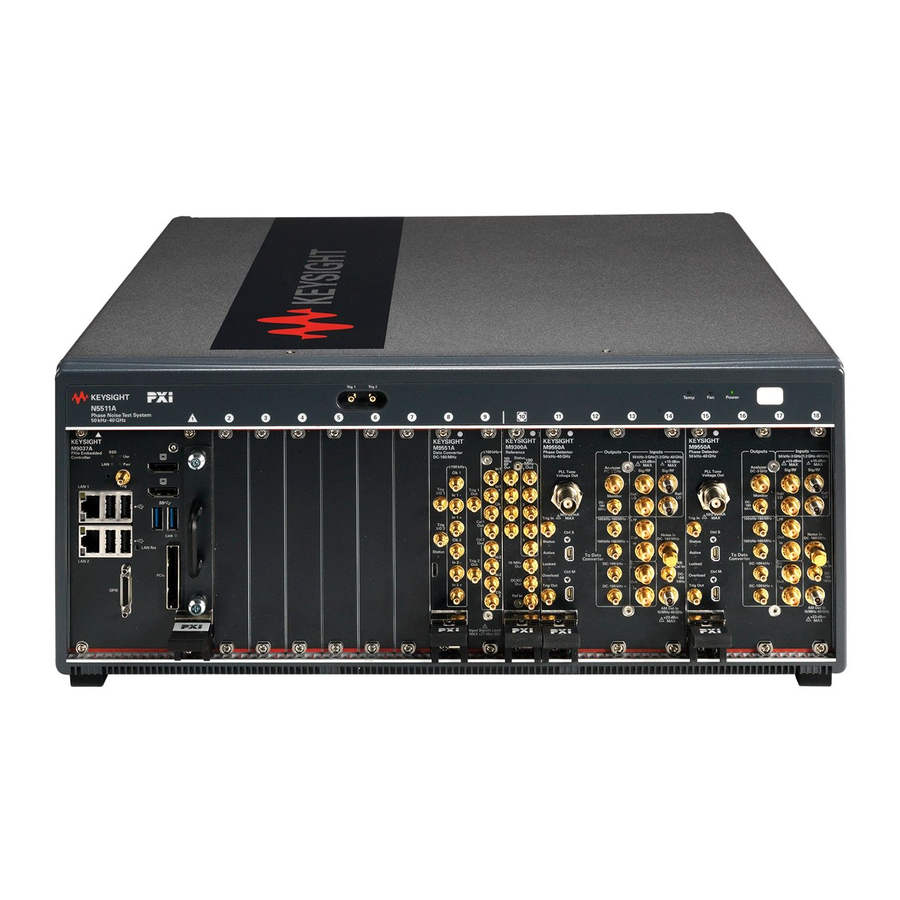
Keysight Technologies N5511A Test System Manuals
Manuals and User Guides for Keysight Technologies N5511A Test System. We have 2 Keysight Technologies N5511A Test System manuals available for free PDF download: User Manual, Getting Started Manual
Keysight Technologies N5511A User Manual (369 pages)
Phase Noise Test System
Brand: Keysight Technologies
|
Category: Test Equipment
|
Size: 14 MB
Table of Contents
Advertisement
Keysight Technologies N5511A Getting Started Manual (94 pages)
Phase Noise Test System
Brand: Keysight Technologies
|
Category: Recording Equipment
|
Size: 5 MB
Table of Contents
Advertisement
Related Products
- Keysight Technologies N4000A
- Keysight Technologies N4001A
- Keysight Technologies N5102A
- Keysight Technologies N5531X
- Keysight Technologies N5511A-K26
- Keysight Technologies Agilent N5500A
- Keysight Technologies PNA-X N5242A
- Keysight Technologies N5264A
- Keysight Technologies N5172B
- Keysight Technologies N5227B

